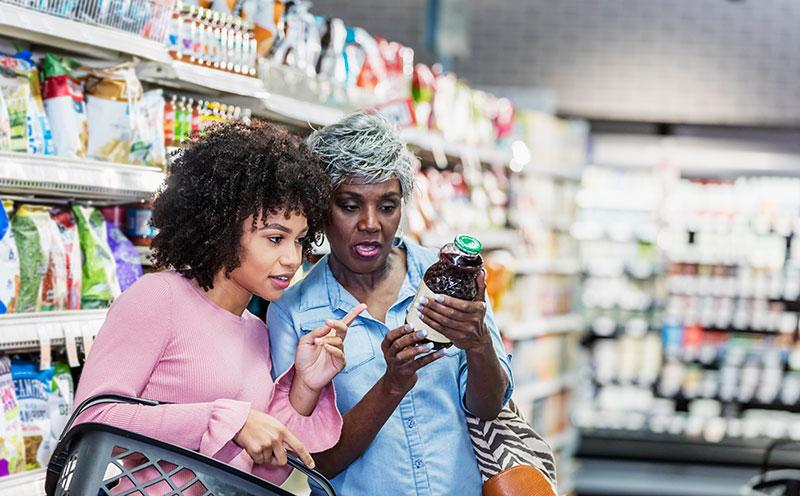What’s the Difference Between 无糖 and 无添加糖?

Making sense of sugar claims on the package
Foods and drinks sometimes seem to almost talk to us from the store shelves. “嘘,注意你的体重? 来看看我!”“少吃糖? 我就是你想要的人!”
Food packages often include statements about health benefits or nutritional quality separate from the required 营养成分标签. You may be wondering how to make sense of it all. 这些产品更健康吗??
标签里有什么?
这里的食物 & Drug Administration (FDA) regulates health and nutrient content 食品和饮料包装索赔. In 2016, the FDA revised the 营养成分标签 to list both “Total 糖s” and “添加糖.” Now it’s much easier to find out how much added sugars are in a food or beverage.
有一些 证据 that the change could have a massive impact not only on people’s ability to make healthier choices but also on how much added sugar the 食品行业 放入我们的食物中. 无论如何, reading the 营养成分标签 and ingredients list on packaged foods is a good way to know and limit how much added sugar you and your family eat.
But what about other types of sugar content claims, such as “no added sugar” on the packaging? These can be helpful, but only if you understand what they really mean. 那么,让我们来定义一些常见的术语.
含糖量声明是什么意思?
根据FDA, nutrient content claims describe the level of a nutrient, 比如糖, in the product using terms such as “free” and “low” or compare the level of a nutrient in a product to that of another product using terms such as “reduced” and “less.”
无糖
一份*的含量小于0.5 grams of sugars, both natural and added. (也被列为免费的 sugar, sugarless, no sugar, zero sugar, or trivial source of sugar.)
减少糖
Has at least 25% less sugars than the regular version of the product. (亦被列为 less sugar, low in sugar or lower sugar.)
无添加糖
No sugar or ingredient containing sugar was added during processing or packaging. (亦被列为 不加糖或不加糖.)
*The labeled serving size and/or the reference amount customarily consumed (RACC).
Products with sugar claims often contain a 代糖 或者低热量的甜味剂. This is how they can contain less sugars but maintain the sweetness expected in the food or drink.
如何做出更健康的选择
When you see a sugar content claim on a product, use the information on the 营养成分标签 and ingredients list to make sure it’s a healthier choice. 了解美国心脏协会 recommended daily limit for added sugars. 遵循以下建议:
- 建立一个整体 健康饮食模式, including plenty of fruits and vegetables.
- 吃的大多是 营养丰富的 foods, which tend to be lower in added sugars.
- 选择产品 少添加糖.
One of the best ways to reduce added sugars in your diet is to 限制含糖饮料, 包括普通苏打水, 甜茶, 咖啡饮料, 运动和功能饮料, and sweet fruit juices such as apple and grape. 让水成为你的默认选择. If you crave something with a bit more flavor, add some slices of citrus or cucumber to your water, or sip on unsweetened iced tea or coffee.
底线
If you eat a lot of sweets or drink sugary beverages regularly, finding replacement products with less added sugar can be a good way to start cutting back and improving your health. Switch to unsweetened products when possible. Over time, your palate will adjust, and you won’t even miss the sugary taste.






